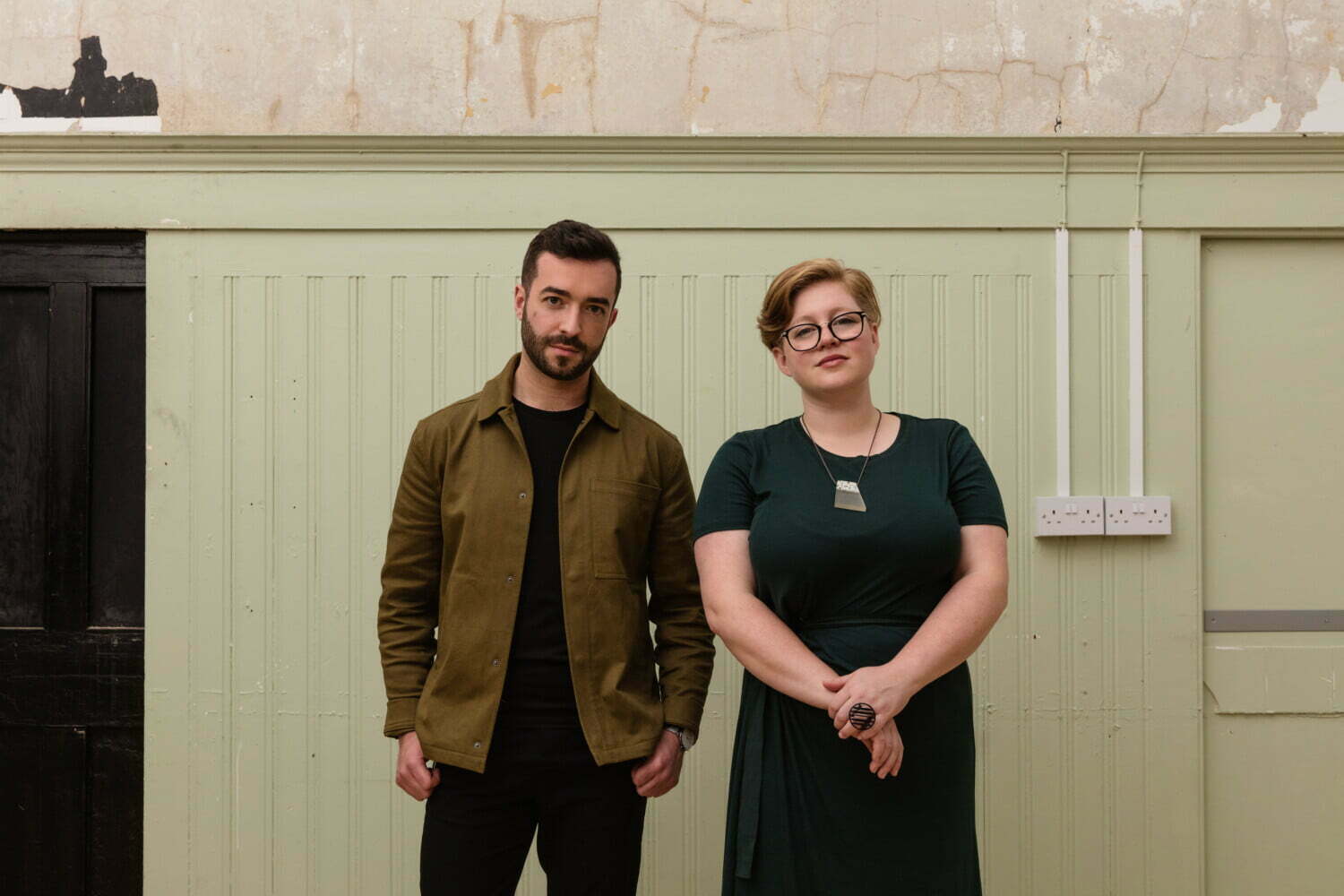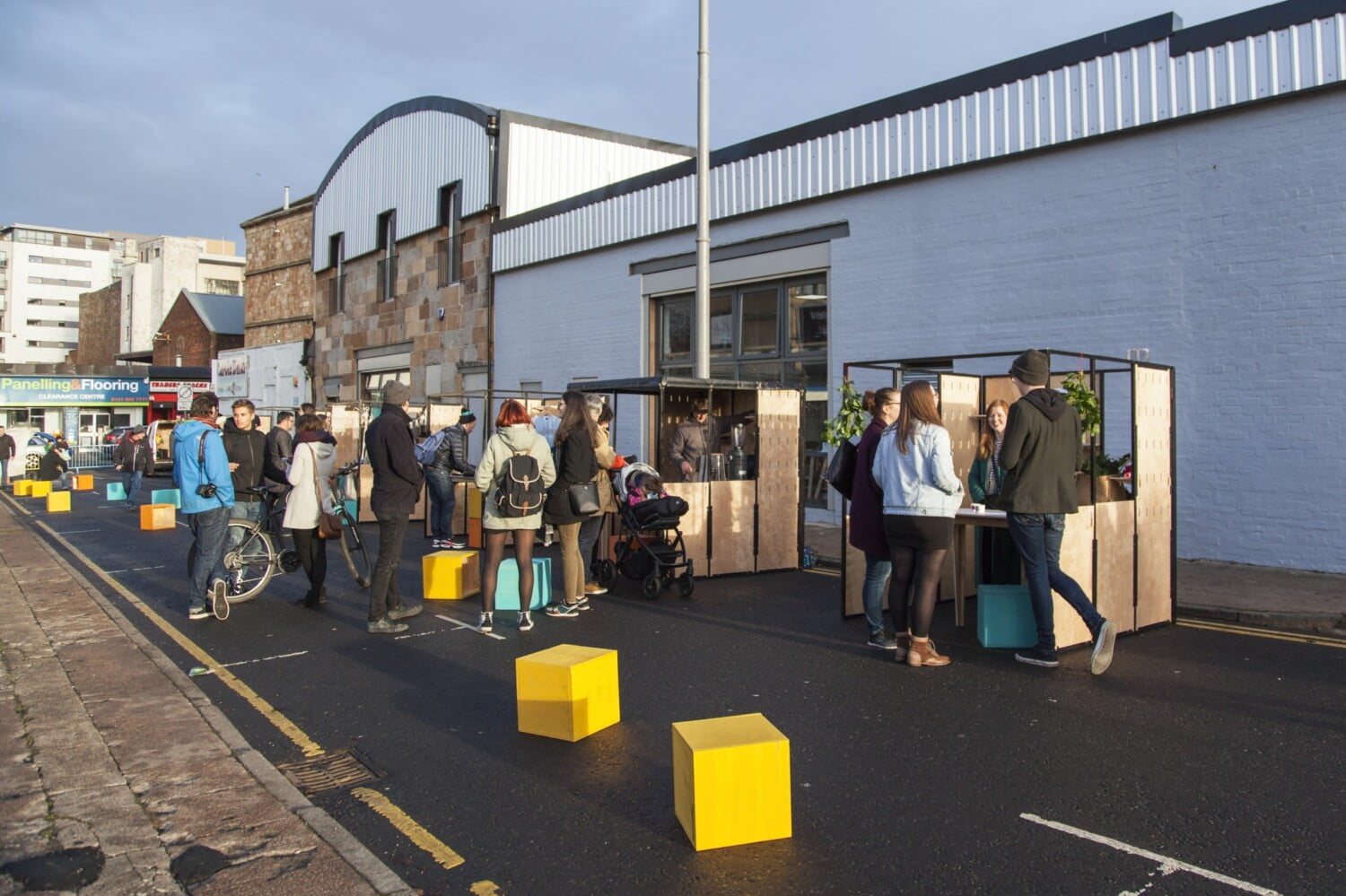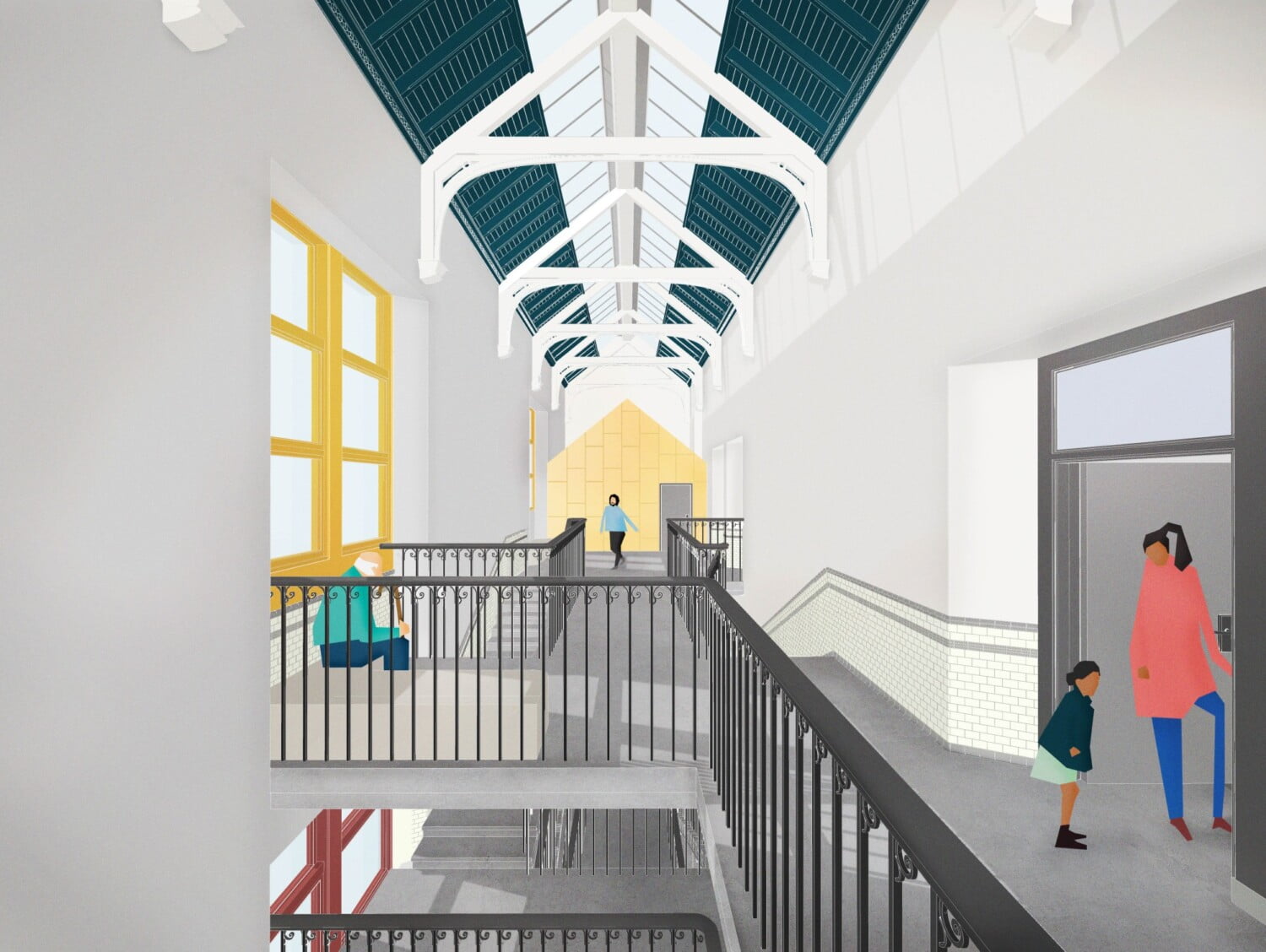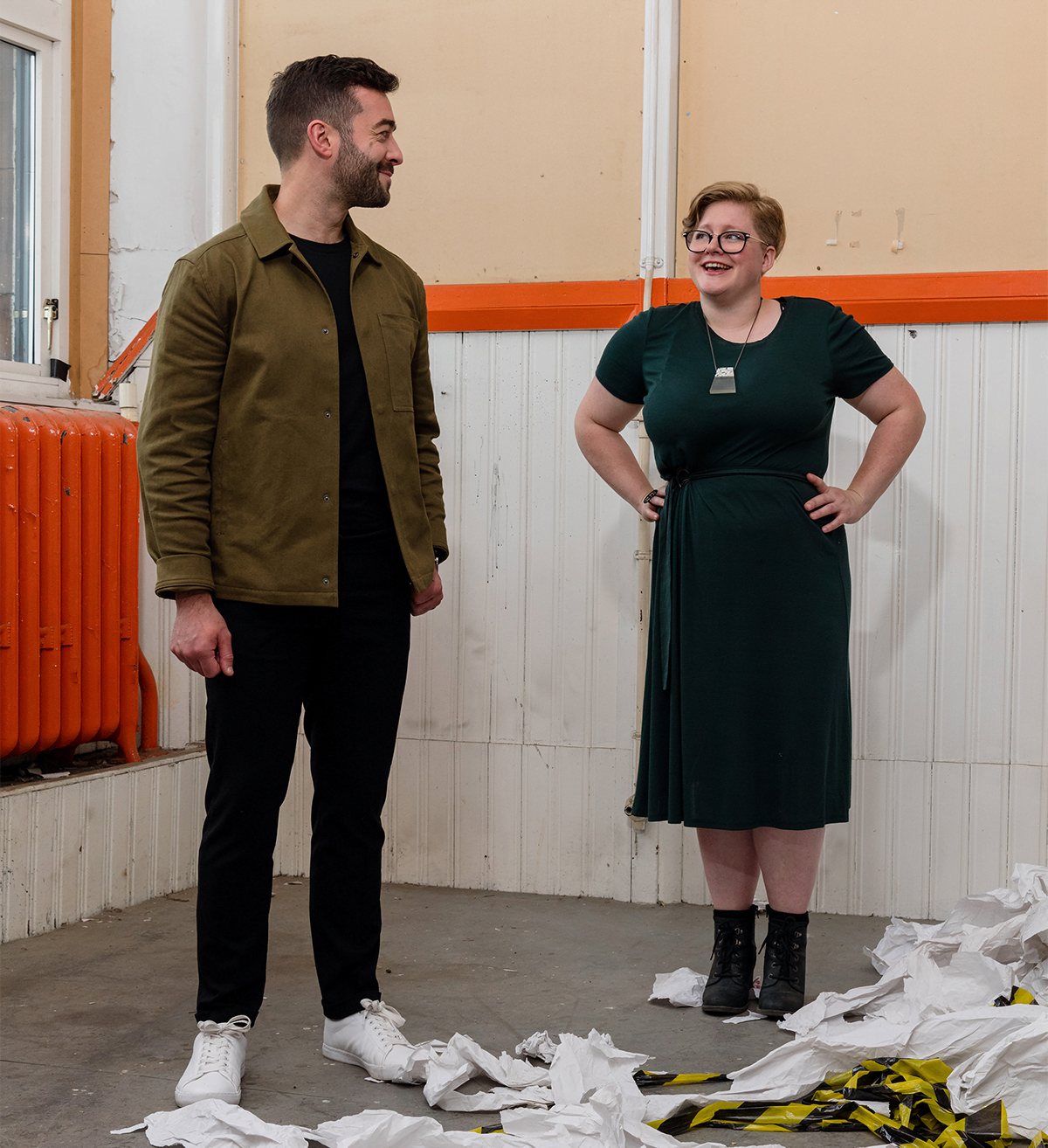Many successful practices have been born in challenging economic times. Becca Thomas tells the story of New Practice, from its small beginnings in the midst of a recession to the challenges of building a sustainable small practice from scratch.

A lot has changed since we started a business in 2011, but as the UK goes back into another deep recession, we have been reflecting on what drove us to start a practice – the frustration with the status quo, the lack of opportunities and an increasingly competitive jobs market feel very similar to our graduate days and I’m sure resonate with those who have gone through previous downturns. I hope we’re about to see another wave of small start-up practices who will challenge the way things are being done, engage with new technologies and explore new ways of working with communities. But can they do this without a generous cash injection from the ‘Bank of Mum and Dad’?
There is a cyclical discussion in architecture around the need to diversify and reduce the flight of women, people with disabilities, and Black people and POC from architecture. This discussion often fails to deal with the generational wealth that bolsters many successful architect’s beginnings in the profession. No matter how you practise architecture, it is obvious that being a person with privileges makes it easier to access the pathways to success within our profession. In lectures, the most common question is often: “where would you start, if you were a graduate now”. For over a decade I have heard architects give this, or similar, advice in response: “I would speak to my family and their network to find out who needed an architect”.
Beginning an architecture practice, like any business, is difficult and costly. There are start-up costs – rent, insurance, soft and hardware – before you even start to think about staffing. Suggesting that everyone – including those without personal access to financial resources or strategically connected family – can simply pull themselves up, denies that privilege and access are vital starting points for many. Acknowledging that the majority of practice runners start leaps and bounds ahead of the pack would help stall the negative cycles of comparison. Marc Cairns and I generally describe the formation of our practice along these lines: “beginning as an academic project in 2010, with agit-prop explorations of the city, initiation of design challenges and thinking up big ideas, our practice has grown into something much more, something exciting, new and relevant to the world today. New Practice is anchored in a commitment to the design and delivery of beautiful, practical places.”
This is accurate as far as it goes, but misses out many of the details and what we have put into building a sustainable small practice. We established our working relationship in 2011, while I was still a student and Marc had recently graduated from his M.Arch. Jobs were scarce, we were still in the midst of the last recession, and both of us considered leaving Scotland to find work elsewhere. Instead we did something different, something we didn’t know would have a long-term future.
We didn’t have seed funding, family clients or an established professional network but we didn’t quite have nothing. We shared a desire to continue experimenting, a sense that we hadn’t stopped learning and the knowledge that, before committing to ‘being an architect’, we wanted to do, and try, and see, more. If we hadn’t been fearlessly in our early twenties, or living in a city with a low cost of living, it might never have happened.
We brought very few assets with us: a couple of old laptops ravaged by architecture school, scavenged software from our university days, and a need to ask questions and experiment with the skills we learnt in our architectural education. We had no wish to do housing extensions or draw up drainage plans, something we successfully avoided for five years.
To start with, I worked part-time for another practice, while Marc spent his evenings working in a local restaurant – often serving the very clients and architects we’d be meeting with during the day. These jobs funded our studio space and all the other costs that kept snowballing in our ‘start-up’. We didn’t pay ourselves regularly, or properly, for at least four years, all the while pushing to be ethical employers. We didn’t become employers until we were confident that the practice was sustainable enough to commit to a decent employment in terms of remuneration, length of service and valuable experiences.
We quickly figured out how to access small funding pots from local government, national portfolio organisations and with other architects for self-initiated projects that ultimately didn’t produce built outcomes. We worked our network of ex-tutors to connect us to decision makers within Scotland who would be our first clients. Conjuring clients from our starting point was hard work, and many of our “early adopter” clients and collaborators were taking a big risk in working with us. Their reasons? Perhaps they were bored with the status quo, or they genuinely believed in us – either way, they gave us a foot in the door.
We were bold in taking on thought pieces for public sector organisations, and as we became more visible we were invited to compete for and deliver high profile engagement programs and research during this period of recession.

However, buildings aren’t like thought pieces or engagement programs. No-one would take a risk on us to design and deliver a building, so we did it for ourselves. Our first building came about because through a dollop of good luck, Marc and I – as part of a small group – were asked to take over the artist’s studios in which we were tenants. At that point the organisation was unsustainable and owed money it couldn’t afford to pay. With our architectural training, we sought to fix that with a spatial solution – a new location. In a ‘right time, right place’ scenario, one of our early adopters identified another opportunity to help us get our feet on the ladder. They supported our pitch for grant funding as part of a once-in-a-generation chance to contribute to the ongoing regeneration of The Barras, linked to the 2014 Commonwealth Games investments in the city. From 2013 to 2016, I worked to make the Creative Hub at 3 Ross Street exist with not enough money and taking on plenty of risk.
With that track record in place, we could seek out our next building. We started on the design for Kinning Park Complex in 2017, and though this is a much more traditional affair, the community-led nature of the renovation lends itself to our unconventional approach to architecture.

Whilst we often discuss hard work in architecture, luck is not much talked about. Maybe people are worried that the presence of luck in their story erases their hard work or talent? But that’s not the case.
Luck can look really different for different people. In my case, I’m lucky I’ve met the people I have along the way. I’m lucky that my hard work and talent seem to be paying off, and I know that my luck has been helped by being a white, middle-class, grammar school educated young woman living in an inexpensive city and surrounded by a strong support network of my own. I wonder how different New Practice would look today if my luck had been a black book of family connections and fully funded projects from day one… I don’t think I’d be telling you that story, and I know that we would have missed out on what our experimental and non-traditional route has given us: learning from our failures and then celebrating the many successes that have come from satisfying an ongoing need to test assumptions and experiment with unconventional approaches across the built environment.

Becca Thomas, from New Practice, is an architect based in Glasgow working across the UK and internationally. She works with communities and local stakeholders to directly translate their ideas and values into practical design outcomes from public realm to buildings. Her working partnership with Marc Cairn began as an academic collaboration in 2010 before developing into a practice delivering projects, which went on to win the 2012 RSA Gold Medal, 2014 Herald Society Award and 2018 Scottish Quality in Planning Award. Her work is anchored in a commitment to the design and delivery of beautiful, practical places that offer social and environmental sustainability for healthier and happier neighbourhoods.
Profile images: Alexander Hoyles. This article was first published on LinkedIn and has been republished here with permission.






















